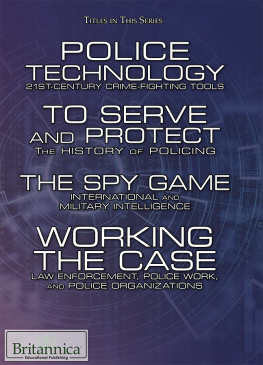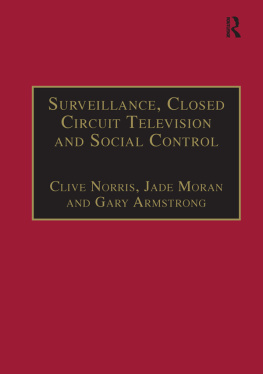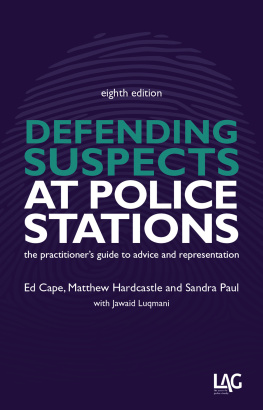Introduction
Allegedly, we live in New Times. Post-Fordist means of production, the emergence of new technologies, particularly communications technologies, have led to a profound restructuring of the late modern world. There has been a significant shift towards the privatisation of public space, as well as radical changes to the organisation of urban environments and to the sources of identity formation. According to Giddens (1990) the disembedding of social activity from localised contexts, and the changing of sources of trust from localised systems to abstract systems, has resulted in a heightening of what he terms ontological insecurity. Correlatively, security has become commodified (Jones and Newburn 1998) and new technologies of surveillance, particularly closed-circuit television (CCTV), have become increasingly prominent as the means of governing particular (especially public) spaces. Such technologies have enabled the emergence of a form of digital rule (Jones 2000), where at a distance monitoring becomes a key element in electronic crime control.
Criminologists have been much taken by these new technologies. Hitherto, however, their gaze has rested primarily on the impact of such technologies on public space, and has been characterised by a somewhat dystopian view of such developments. This book focuses on the experimental introduction of CCTV within a rather different form of space: a custody suite within a busy police station in Kilburn in North London. The cameras, placed in the reception area, the corridors between the cells, and in all of the cells in the suite, were designed to monitor continuously the behaviour of people in custody. As such, the experiment provides a marked departure from many, if not most, previous uses of CCTV within the fields of criminal justice and crime control. Consequently, it allows us to view the nature and impact of the use of such technology within a very different environment from those where it has previously been studied and, more particularly, brings into focus new questions and issues.
This book is divided into three main parts. In this chapter we consider the background to the experiment in general. We look at the issue of police-community relations and the treatment of suspects in custody. More particularly we consider the problem of deaths in custody and the response of the Police Complaints Authority - a body which has increasingly come to recommend the limited use of electronic surveillance in custody. We provide a brief history of CCTV and conclude by looking at the history of the introduction of the cameras in Kilburn police station (henceforward the Kilburn experiment). Chapter 2 outlines the Kilburn experiment, including how it was presented to staff, to the public, what in general terms it consisted of and how much it cost. Chapter 3 describes the setting for the experiment: the custody suite. How does the suite operate? And just who is kept in custody during the course of a year and a half in the life of a police station? We examine the backgrounds of all suspects held in cells: their sex, age, ethnic and cultural backgrounds, together with periods of time held in custody, medical and drug issues, and strip searches.
The second section in the book looks at the experiment in practice. Chapter 4 considers the novel position of the gaolers and custody sergeants responsible for monitoring suspects. In all, 29 officers were interviewed before or after the installation of the cell cameras. How do they feel about this work and its impact on their jobs? Of course, these officers are subject to surveillance themselves, as the cameras are located not just in the cells but also in the reception area and thoroughfares of the custody suite. What are their experiences of the impact of the cameras on privacy, safety and rights? Chapter 5 examines the experience of electronic surveillance from the point of view of the main group being watched: those held in custody. Based on interviews with 73 suspects, again conducted both before and after installation of the cell cameras, we explore their knowledge of the cameras and their experience of the impact of cameras on privacy, protection, safety and rights. Chapter 6 examines the experiences of those mediating individuals and agencies that also work within the custody suite: appropriate adults, forensic medical examiners, lay visitors, and solicitors. How do they view the impact of the introduction of cameras on police officers, on suspects, and on themselves?





